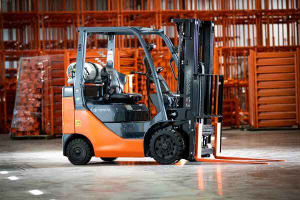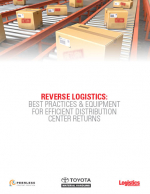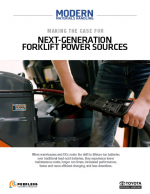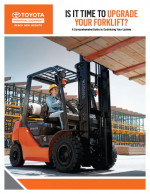Reverse Logistics: Best Practices & Equipment for Efficient Distribution Center Returns
This whitepaper examines some of the best practices for making the return area of your distribution center as efficient as possible.
Being busy with outbound order fulfillment is a good thing for a warehouse. It means your assets and space will likely see high utilization, and every on-time shipment that delivers on your company’s commitments keeps revenue flowing. But it also can come with a troublesome side effect: a surge in returns.
Processing returns in a distribution center (DC) is a key aspect of what is known as reverse logistics. And with the rise of ecommerce, it’s an expanding challenge facing the most successful warehouses. While some DCs have well-organized returns areas, for many operations, the returns processing area can be chaotic, consuming added space and labor.
Download this whitepaper to view the best practices including:
- Types of racks and aisle configurations that can be used in return areas
- How to think about workflow steps such as unloading, staging, and triage
- What types of material handling vehicles such as forklifts and end rider pallet jacks support efficiency
Log in to download this paper.
What’s Related
Related Companies
Toyota Material Handling
Related Topics
Shelving & Racking
ForkliftsToyota Material HandlingWarehouse Operations
All topics
News





Toyota’s IC Cushion Forklift For Optimal Productivity in the Warehouse
The Toyota Core IC Cushion Forklift is an incredibly versatile and reliable choice for numerous applications such as warehousing and distribution, the auto industry, general manufa...
Toyota Reach Trucks for Narrow Aisle Warehouse Applications
Toyota Introduces 22 New Electric Models in Historic Product Launch
Toyota’s Electric Pneumatic Forklifts Can be Driven Outside
Toyota Material Handling Accelerates Manufacturing Operations
More News
Resources

Reverse Logistics: Best Practices & Equipment for Efficient Distribution Center Returns
This whitepaper examines some of the best practices for making the return area of your distribution center as efficient as possible.

Making the Case for Next-Generation Forklift Power Sources
When warehouses and DCs make the shift to lithium-ion batteries over traditional lead-acid batteries, they experience lower maintenance costs, longer run times, increased performan...

Is it Time to Upgrade Your Forklift?
A comprehensive guide to optimizing your forklift fleet's uptime.
More Resources
Favorites

How Does IKEA’s Inventory Management Supply Chain Strategy Really Work?
Each IKEA store is huge and holds more than 9,500 products! How in the world does IKEA offer so...

Starbucks as an Example of the Value Chain Model
The concept of value chain helps to understand and segregate the useful (which help in gaining a competitive...

7 Principles of Supply Chain Management Explained
Would you like to understand supply chain management concepts but don't have time to study from a textbook?...

Is Apple’s Supply Chain Really the No. 1? A Case Study
How Complex is Apple's Supply Chain? Some people in the blogosphere said that Apple's Supply Chain is not...

